The science behind Slimbridge's birds
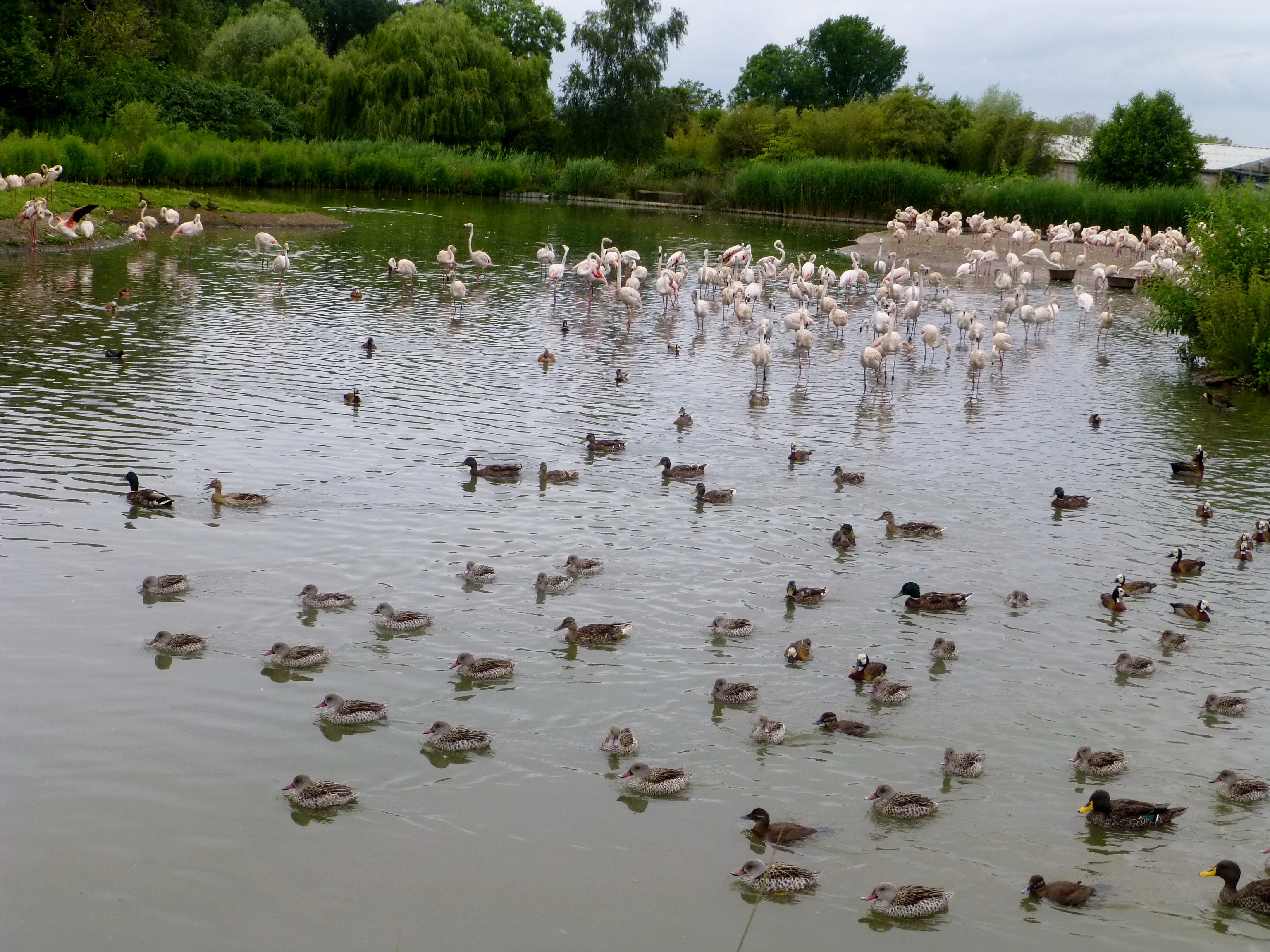 The greater flamingos in Flamingo Lagoon reside with five species of African wildfowl. The enclosure caters for all and hence the birds can rub along without any problems.
The greater flamingos in Flamingo Lagoon reside with five species of African wildfowl. The enclosure caters for all and hence the birds can rub along without any problems.
A slight break with tradition for this post. Previously, I have explained about my MSc students that I have with me to help with the flamingo project, but I also have another student who is investigating the behaviour of some of the wildfowl species in the collection at WWT Slimbridge. I thought it would only be fair to tell you about her work also.
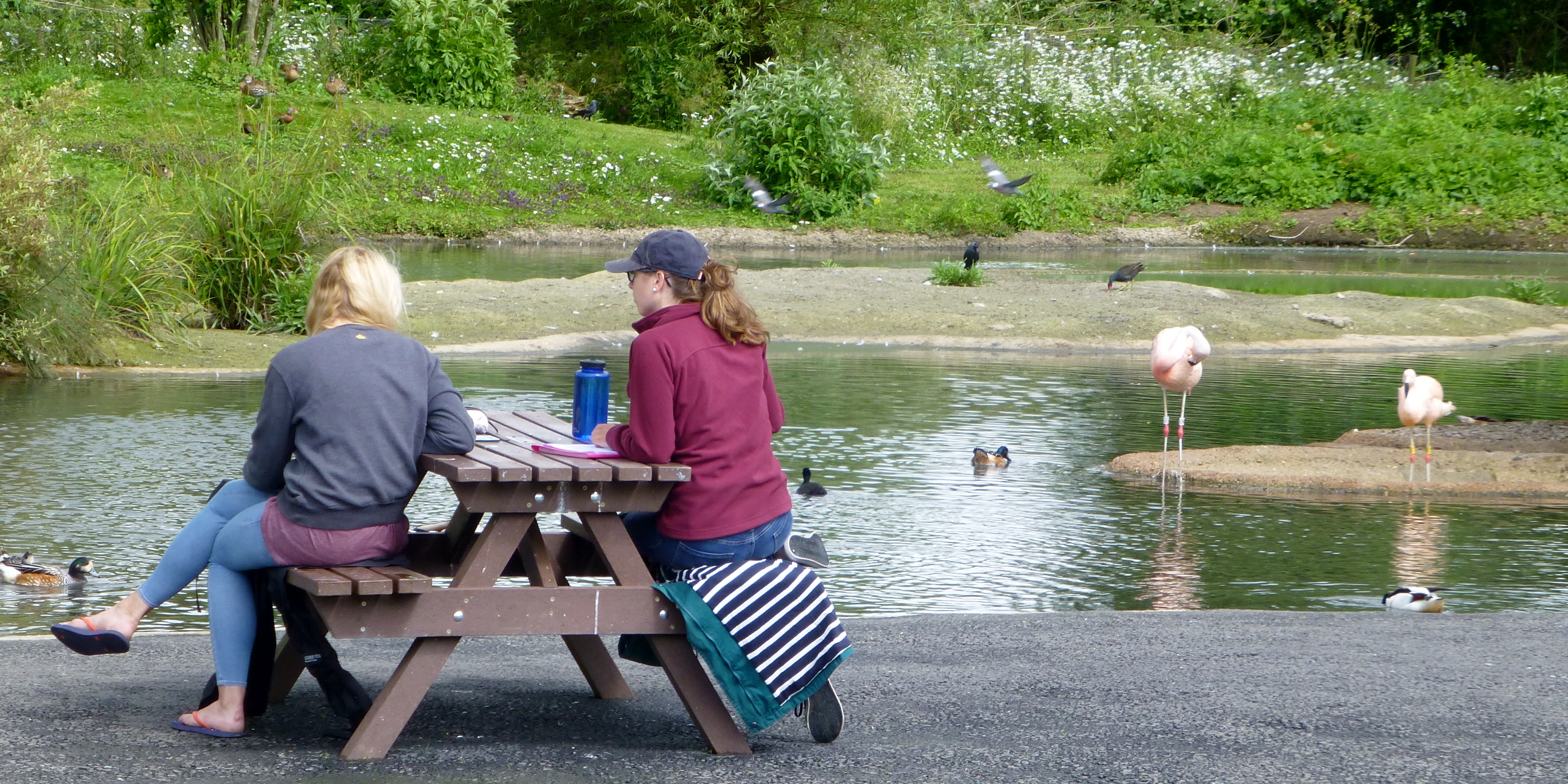 Not just pink birds. Research into ducks, geese and swans is also happening in the Grounds at WWT Slimbridge.
Not just pink birds. Research into ducks, geese and swans is also happening in the Grounds at WWT Slimbridge.
Sophie is based in several of the enclosures in the grounds at Slimbridge as she is observing four different species of wildfowl. She is continuing a research project that started last year with Amelia, another Animal Behaviour MSc student who used the same methods in place this year but on different species. The basis to Sophie's project is to look at the way in which the ducks and geese at Slimbridge behave in their enclosures, and to see where there are areas of their exhibits that they prefer. It is important that the bird's enclosures provide for all of their needs; so be observing where the birds are, what they do and where they have preferences, we know that they are being taken care for properly.
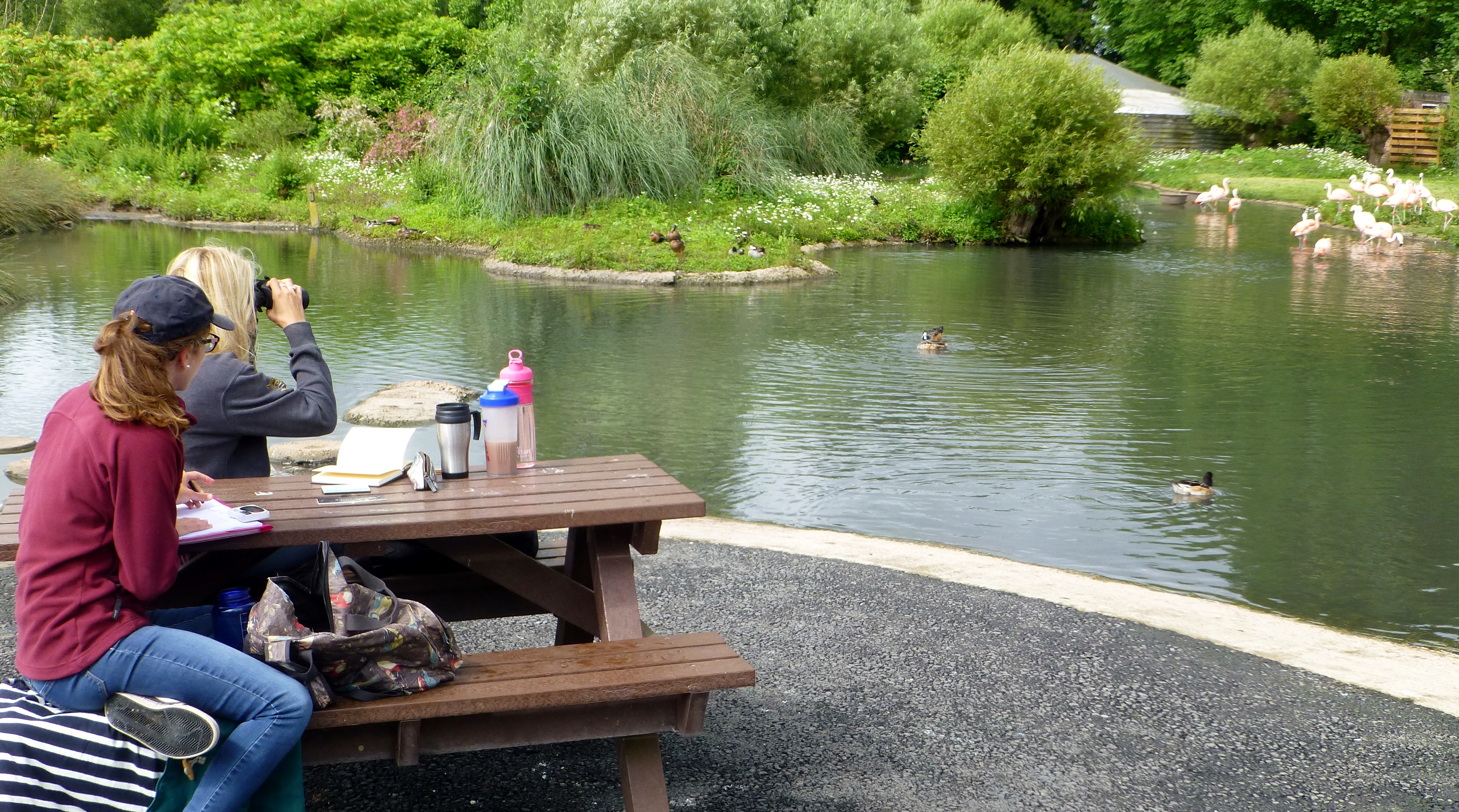 Sophie, front, joins Beth in the South American Pen to observe some of the whistling ducks that call this enclosure home.
Sophie, front, joins Beth in the South American Pen to observe some of the whistling ducks that call this enclosure home.
Last year, this project covered two ducks (Chiloe wigeon and common goldeneye) and two geese (bar-headed goose and red-breasted goose). This year Sophie is watching black-bellied whistling ducks in the South American Pen, white-headed ducks in the Asian Pen, the Australian white-eyes in the Australian Pen and the hooded mergansers in the North American Pen. Like for the flamingo project, the enclosures have been measured, mapped and zones into areas that the birds can use. Behaviour is monitored over time using a specific, standard, method to calculate what are called "activity budgets" for each species of duck, each of the sexes and for different ages (if appropriate). Sophie's results will add to our understanding of the bird's daily lives at Slimbridge and how they compare to birds in other places or out in the wild.
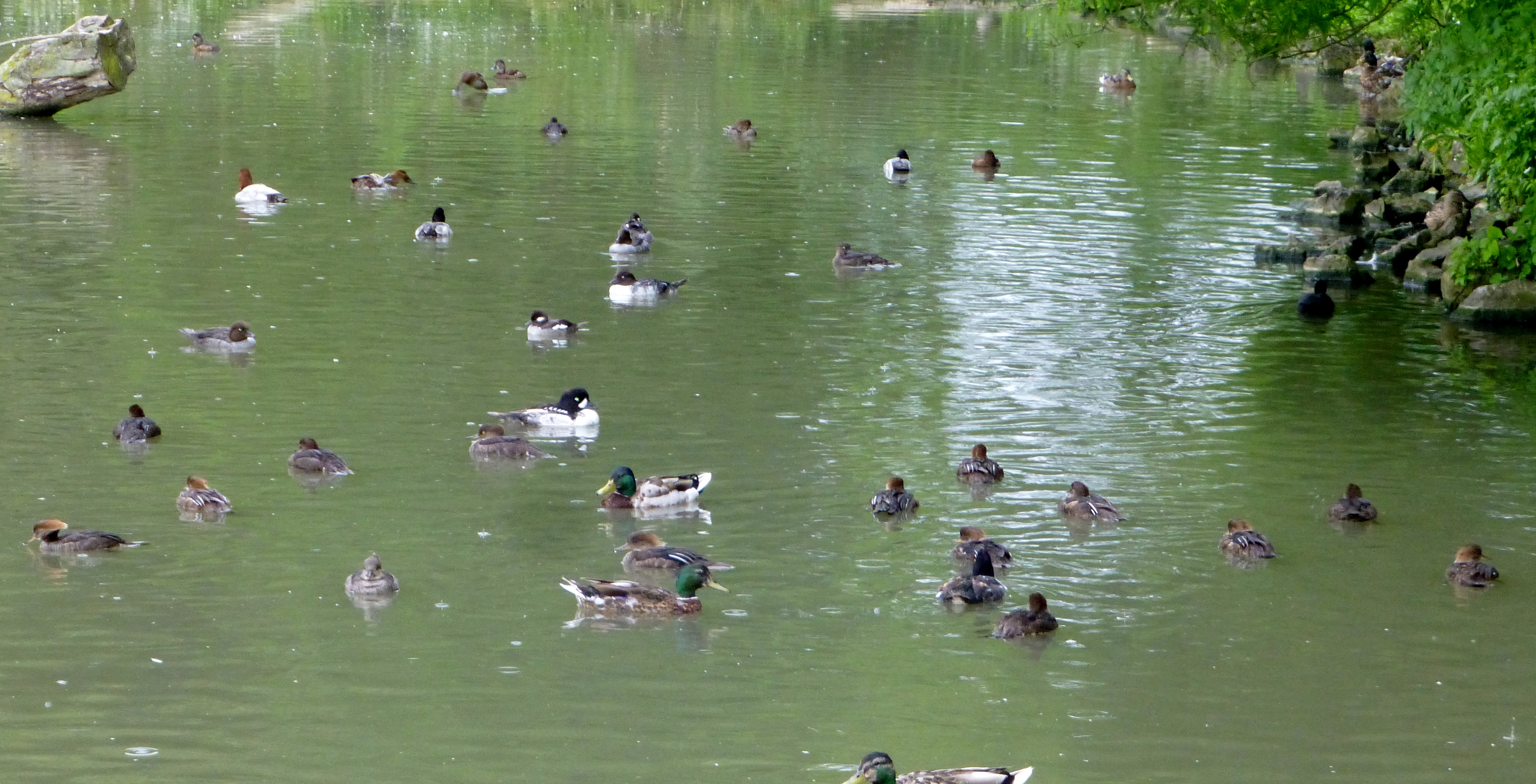 The large flocks of birds held by WWT, check out all of these hooded mergansers for example, make them really useful to science. A real strength of the collection at Slimbridge, and at other centres, is its relevance to research.
The large flocks of birds held by WWT, check out all of these hooded mergansers for example, make them really useful to science. A real strength of the collection at Slimbridge, and at other centres, is its relevance to research.
Big flocks of ducks allow for scientific accuracy in such investigations. Repeatability (do animals behave in the same way?) is really important for animal behaviour research. If there is a natural-sized flock, it means that birds get the chance to behave as they would in the wild, and hence what we see when we observe them can be a suitable insight into their normal activity patterns. It also means that the behaviours seen can be compared to other places too- if there are many ducks in a flock, they are more likely to give similar results to each other. Hence these results can then be looked at against other places that hold the same species.. Whereas comparing only a handful of birds will not be so accurate or useful.
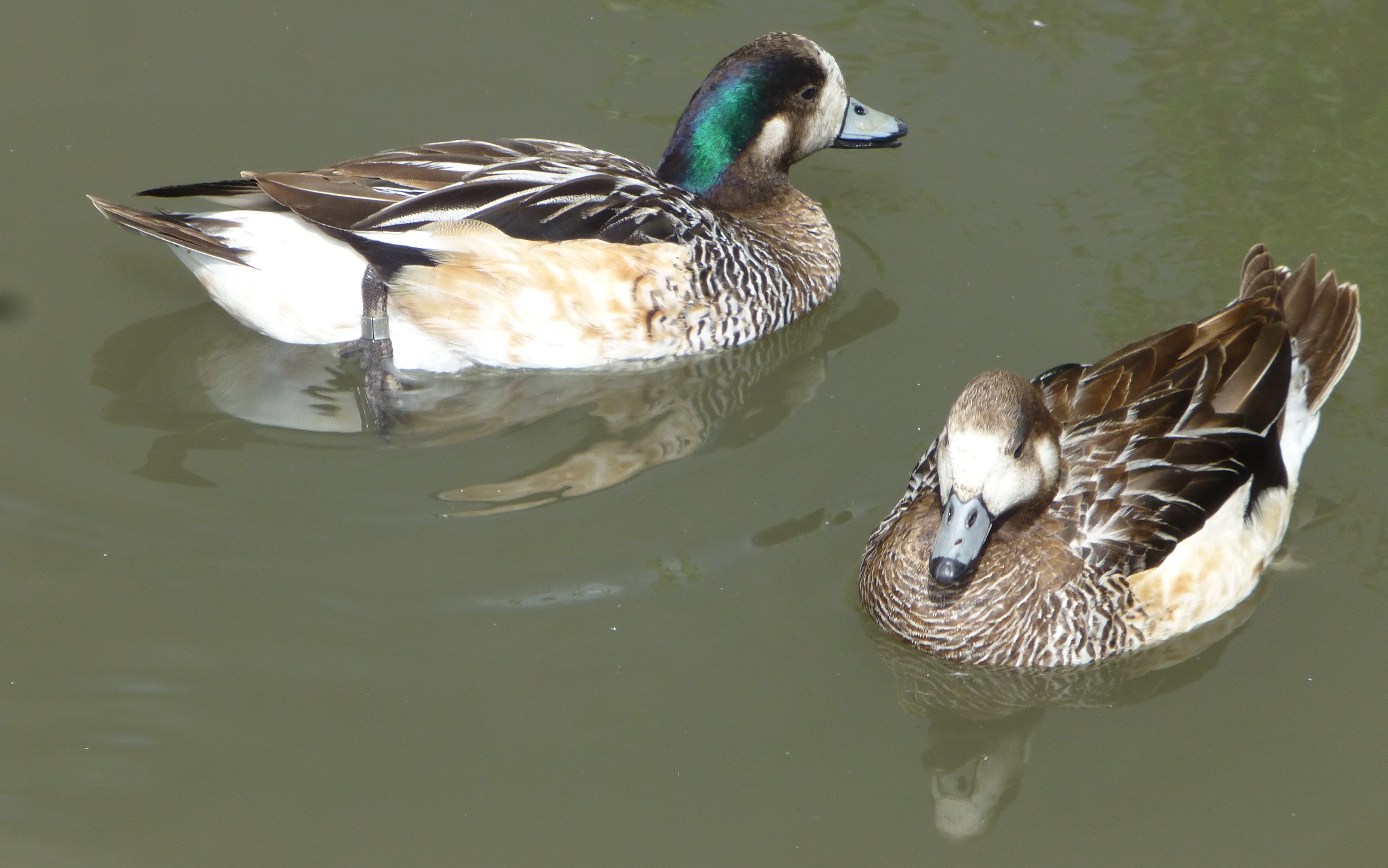 Mr and Mrs Wigeon. Flocks of birds of a natural composition (a mixture of males and females) again ensure that the research conducted is valid and of good quality.
Mr and Mrs Wigeon. Flocks of birds of a natural composition (a mixture of males and females) again ensure that the research conducted is valid and of good quality.
Mixed sex groups, such as in the huge Chiloe wigeon flock in the South American Pen, give the birds an outlet for all of their different social behaviours and courtship activities. Just like the flamingos, who have to be in flocks to behave normally, so WWT's collection of wildfowl shows each species in a flock size that is consistent with its natural history. Andean geese, for example, are very territorial and like to be a in pair. Hooded mergansers, on the other hand, are kept in a group and when the breeding season comes around, flirt, frolic and out-manoeuvre each other to show off their best courting dress.
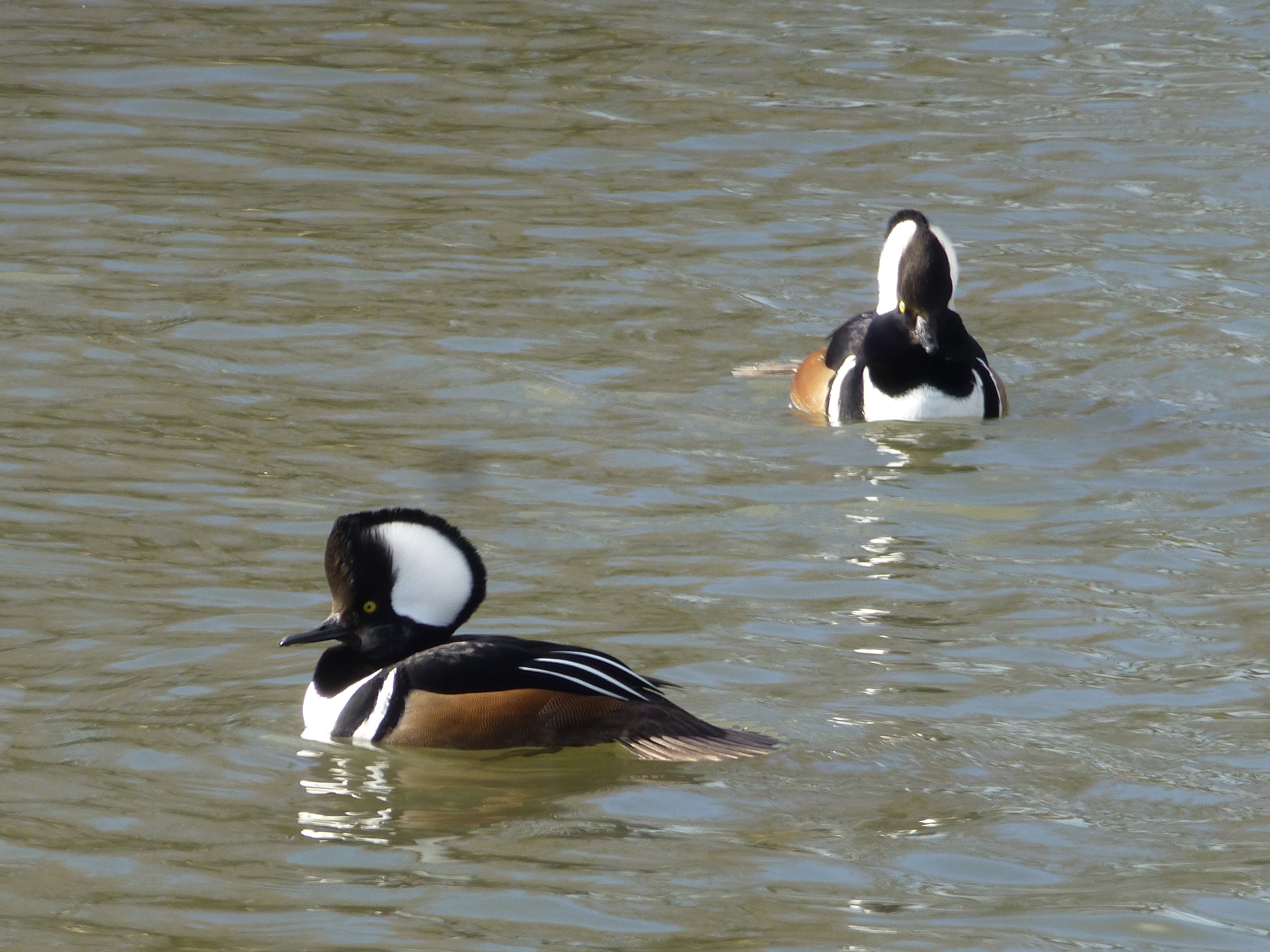 Male hooded mergansers enact their courtship display. A nice example of positive animal behaviour and good animal welfare seen in WWT's birds.
Male hooded mergansers enact their courtship display. A nice example of positive animal behaviour and good animal welfare seen in WWT's birds.
Finally, the enclosures themselves are extremely diverse. Pools have differing depths, vegetation changes across the enclosure, birds have the ability to forage naturally in the water and on land, they can escape from rivals or find a quiet space to meet with their mates. Importantly, they can interact with visitors but can find respite when they are done with being fed grain for the day (which I think is never if you are Chiloe wigeon!). These enclosures also offer the flamingos the same behavioural choices as the ducks gets. And this is the reason why ducks and flamingos co-exist peacefully at Slimbridge and other WWT centres.
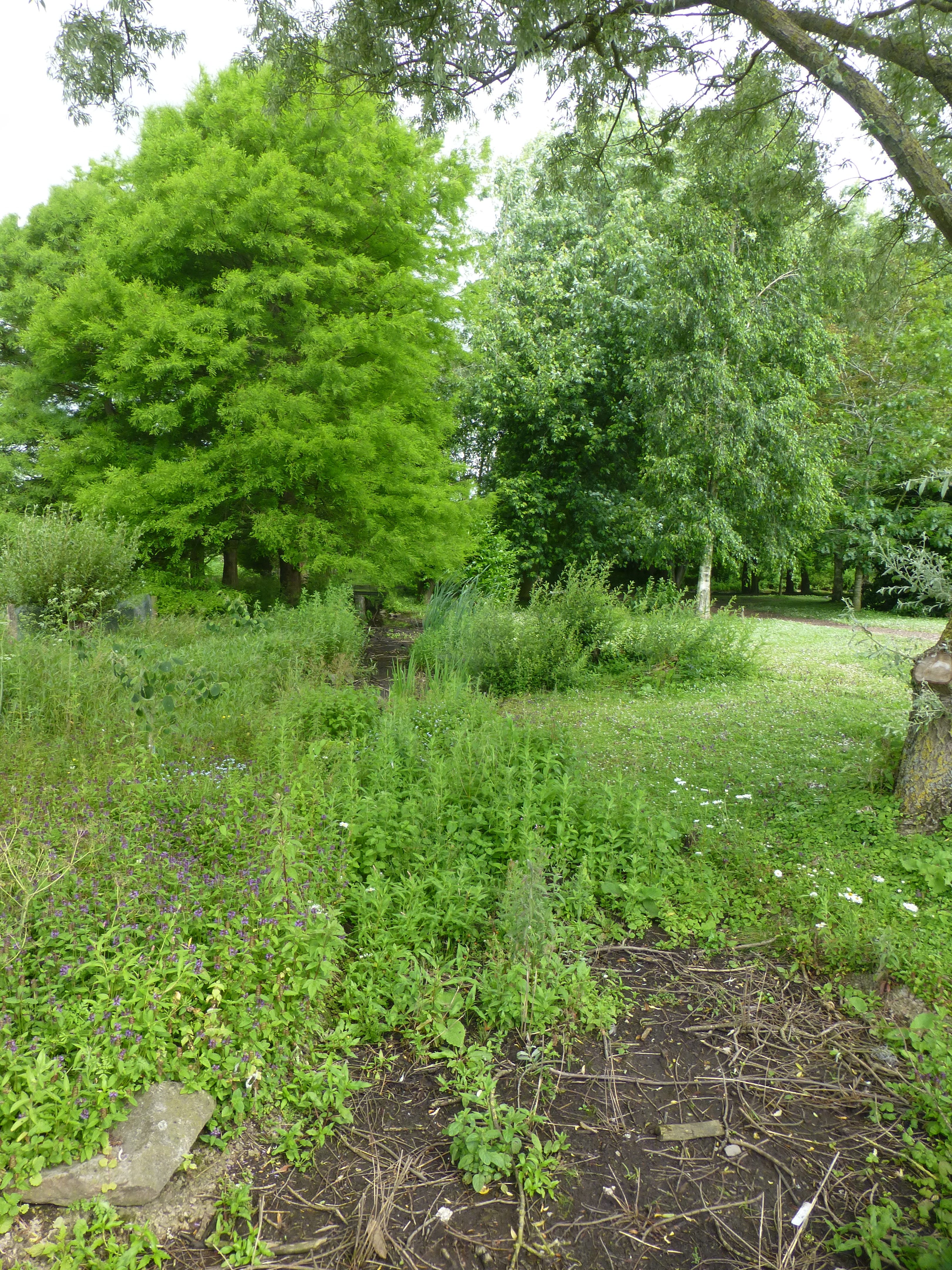 The mass of different environments for Slimbridge's ducks is summed up nicely in this photo of the North American Pen. A whole range of different habitat types available for the birds to use.
The mass of different environments for Slimbridge's ducks is summed up nicely in this photo of the North American Pen. A whole range of different habitat types available for the birds to use.
In posh science terms, the enclosures are enriching. They give the birds within them the opportunity to express natural behaviours and to have a varied and diverse set of activities. Watch the goldeneye in the Tundra Pen for example, diving to grub around in the depths of their pool, or the gaggle of white-faced whistling ducks scooting through the legs of the greater flamingos; so much choice and variety. So much to do and such an interesting environment to do it in. It is no wonder that the ducks, geese and swans at WWT Slimbridge look just as good as the flamingos. And this is why they are a cherished scientific resource for me and my students alike.
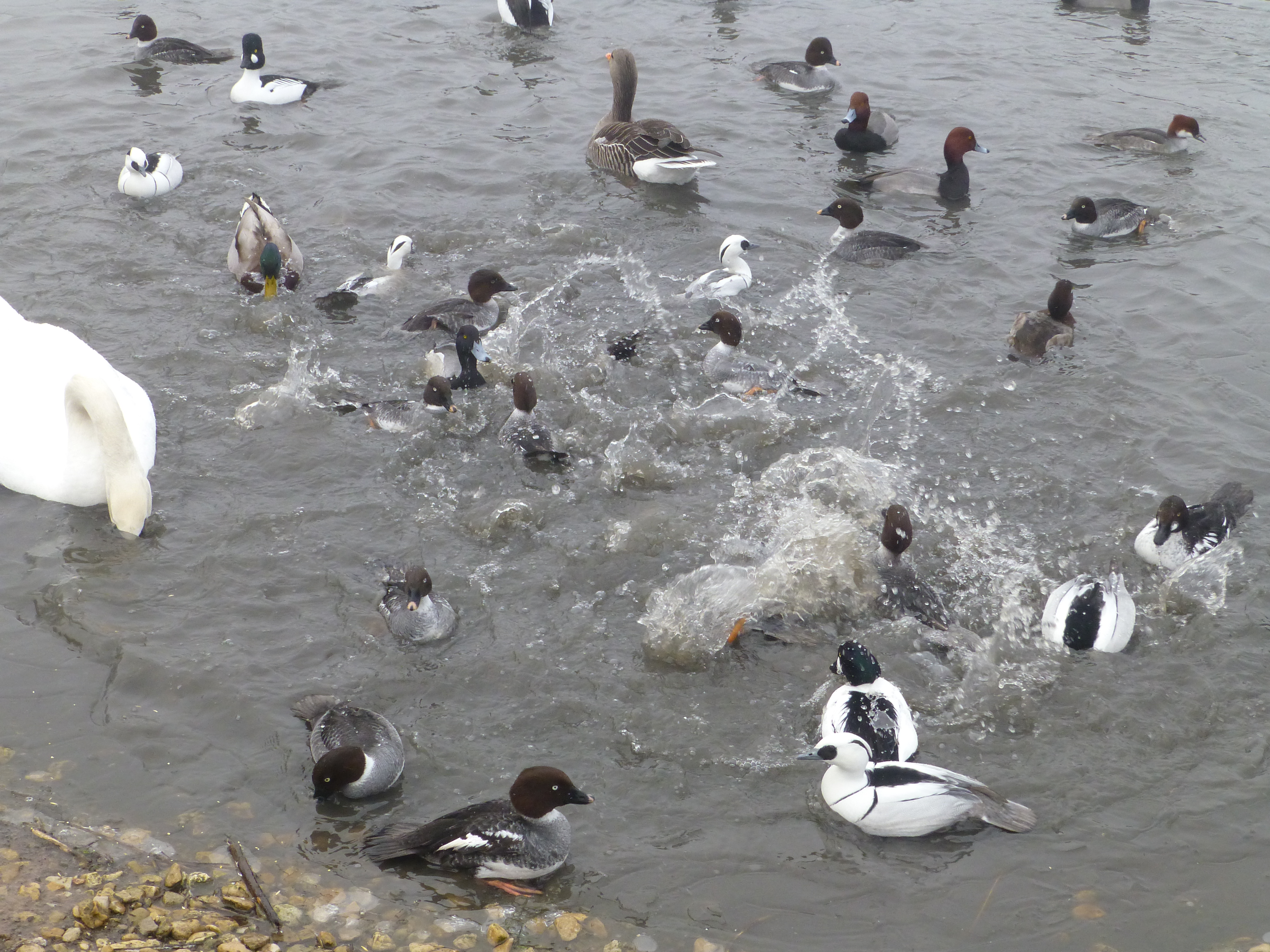 Environmental enrichment- always keen on a splash. Goldeneyes enjoy diving in their pool. The mess they create engages other birds in their activity and hence provides yet more stimulation for all ducks in the flock.
Environmental enrichment- always keen on a splash. Goldeneyes enjoy diving in their pool. The mess they create engages other birds in their activity and hence provides yet more stimulation for all ducks in the flock.
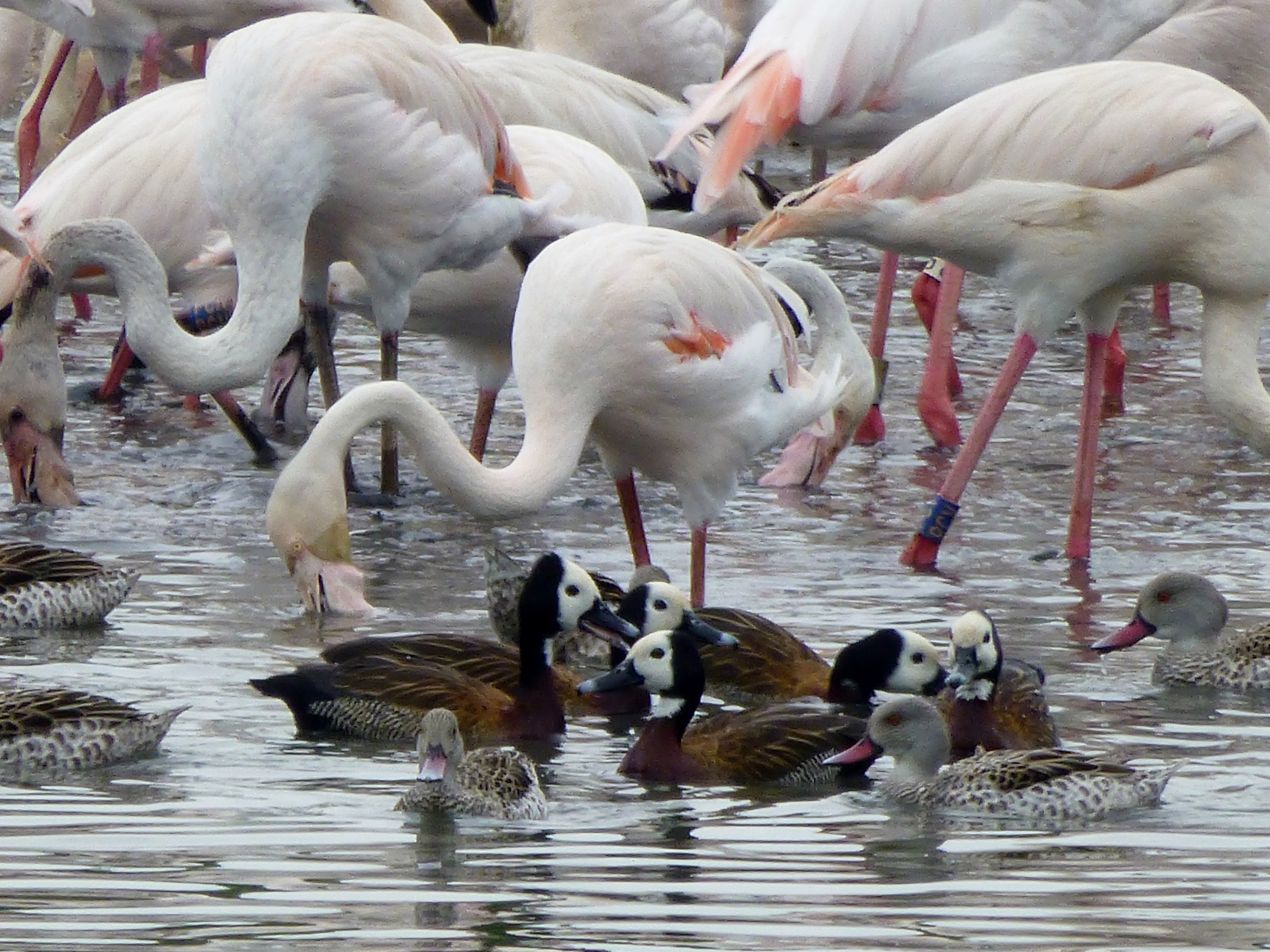 Environmental enrichment- in the wild, other water birds will forage around feeding flamingos. The flamingos stir up tasty morsels and the ducks pick these up. You can watch this behaviour at Slimbridge.
Environmental enrichment- in the wild, other water birds will forage around feeding flamingos. The flamingos stir up tasty morsels and the ducks pick these up. You can watch this behaviour at Slimbridge.
This short clip below shows the diversity of birds in Flamingo Lagoon. I hope you'll see from the number of animals present, of so many different species, why this is so very helpful to those investigating animal behaviour.



